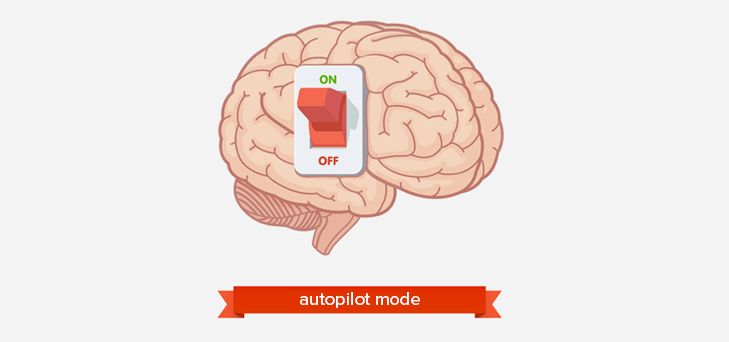Consumer Autopilot Mode for Brands by Kahneman
According to Kahneman, the brain's decision-making mechanism is divided into two: pilot and autopilot mode. Pilot mode kicks in while thinking and runs slowly. Autopilot mode, on the other hand, takes action quickly but without thinking, with emotions and perceptions. Since strong brands activate the autopilot mode in the consumer, their business is often left to chance.

While learning something new, the pilot steps in, stops, and thinks. It is therefore a slower partition. The autopilot part of the brain that Nobel laureate Daniel Kahneman talked about works intuitively. It takes action quickly, automatically, and without thinking. Accordingly, it consumes less energy compared to the pilot part. In this context, the effect of the reptilian brain on the customer's decision-making process is also an important issue.
You may have heard of the famous 10,000 hour rule. The time required for a learning to become truly intuitive and automatic. In other words, we can put an activity that we learned in pilot mode into autopilot mode after sufficient experience.
An example of Kahneman's autopilot mode
Think about the first time you learned to drive or swim. These activities that you do very simply today may have required a lot of effort at first. But after a long learning process, it has become as easy as walking. This is because your brain has now put these activities on autopilot.
Most of the time, people go on with their lives by taking instant solutions and decisions with the logic of autopilot, albeit unwittingly. However, in case of a new problem that may occur, the pilot mode is always in reserve.
In other words, while the pilot part works consciously, the autopilot part works unconsciously without you being aware of it.

Autopilot mode from the advertising dimension
As humans, we do not make 90% of our purchasing choices consciously. (Martin Lindstrom, 2014). In other words, consumers are not actually aware of the reasons behind their preferences. The main reason for this is that the source of our purchasing behavior is unconscious.
Let's exemplify:
Imagine you are going to a fast food shop. When the cashier asks what to drink, the majority of people will say Cola, which is the first choice that comes to mind. The consumer who wants to drink something different will stop. He will think about it and make his decision accordingly.
Here, strong brands activate the autopilot, as Kahneman said, and do not leave their work to chance. Consumers of less powerful brands, on the other hand, stop. Thinks about the purchase decision by activating the pilot mode. In this case, the possibility of the brand losing the consumer comes into play. (Telesian, 2014)
So how strong is your brand?